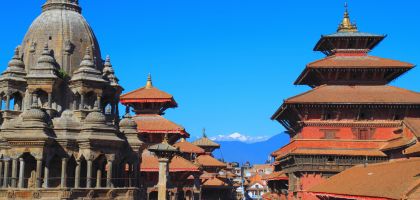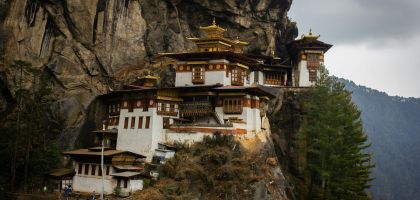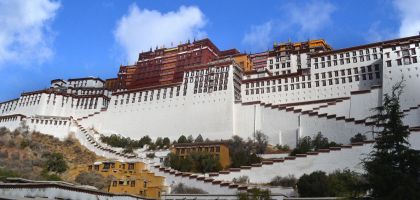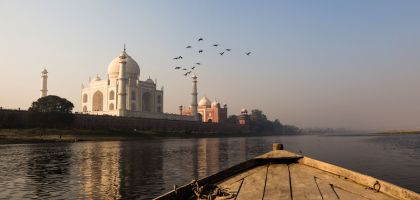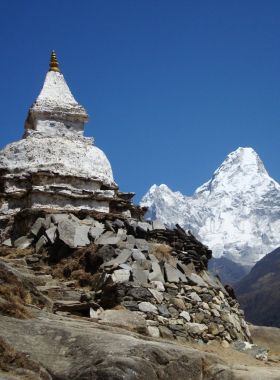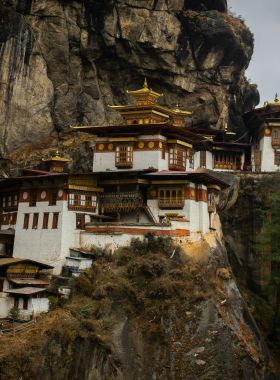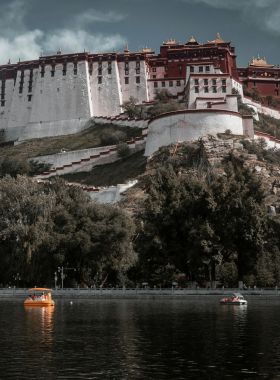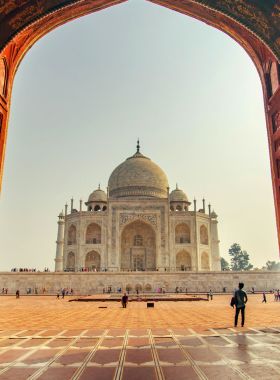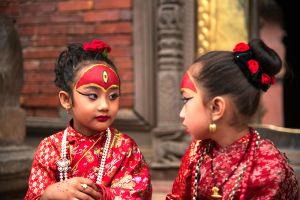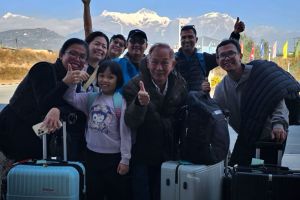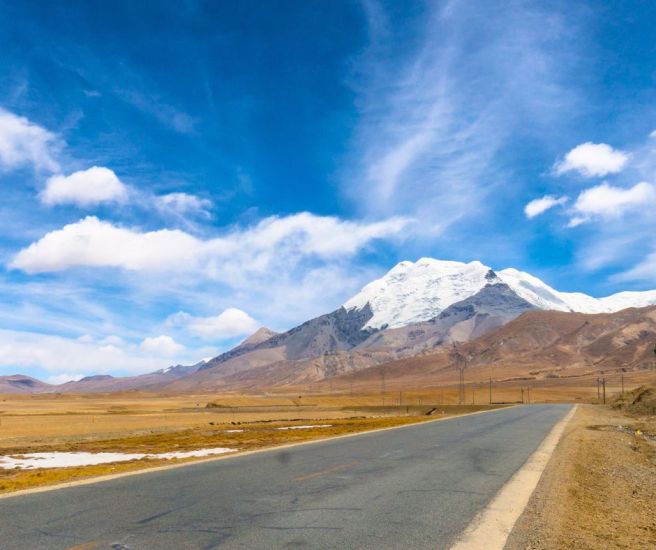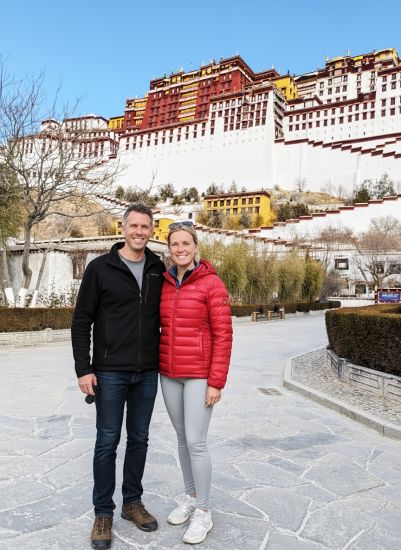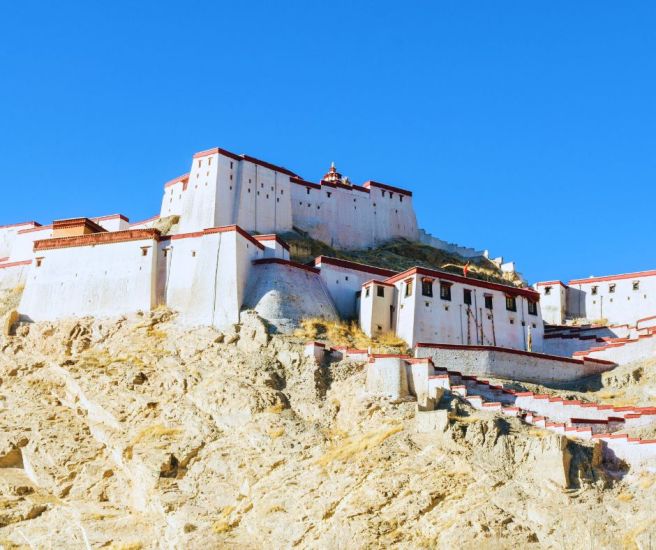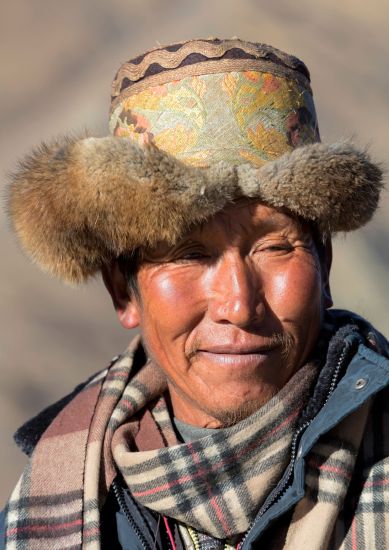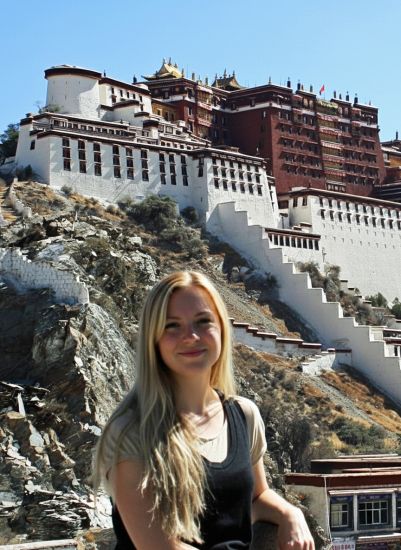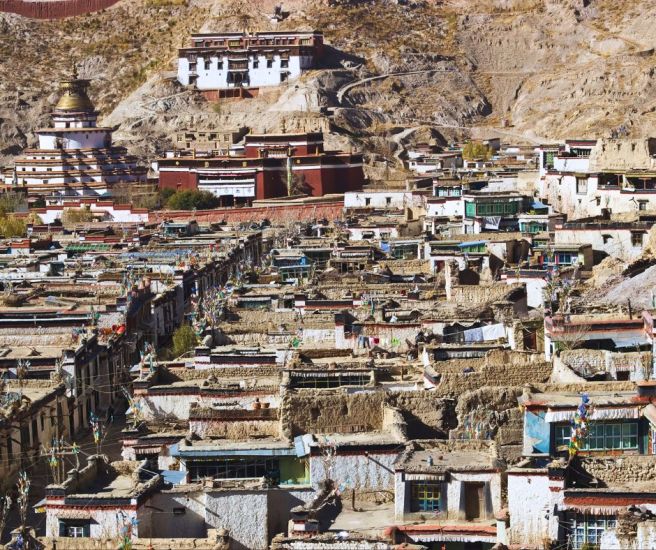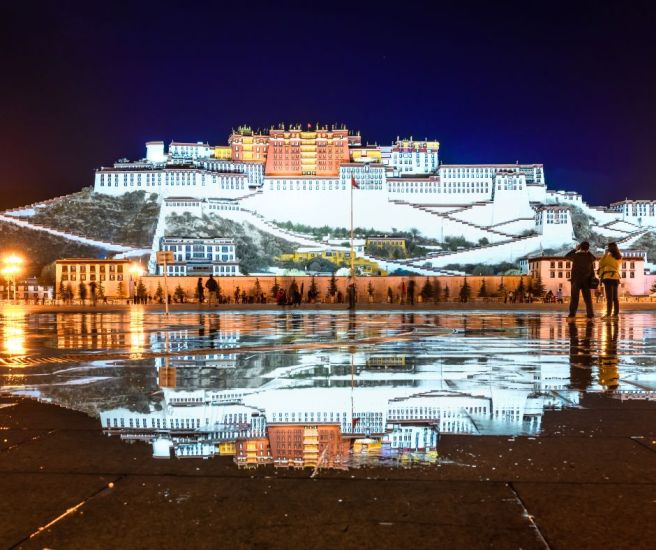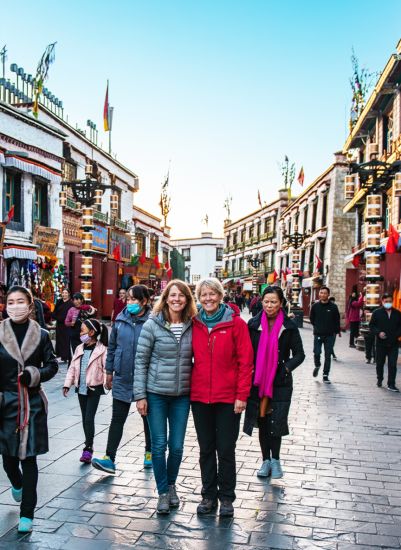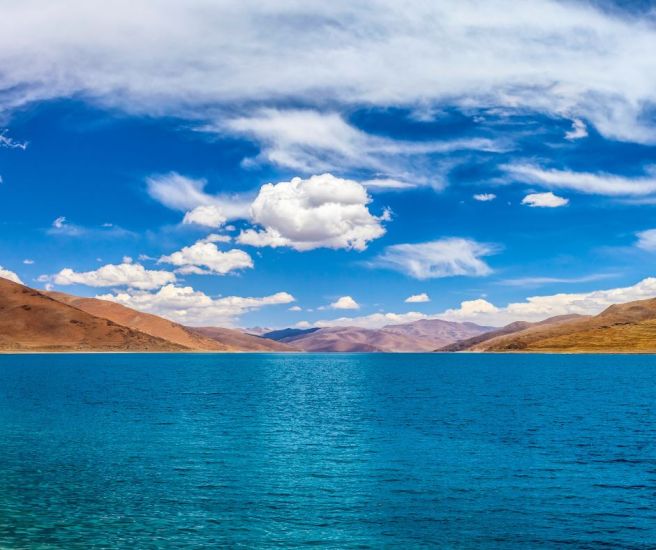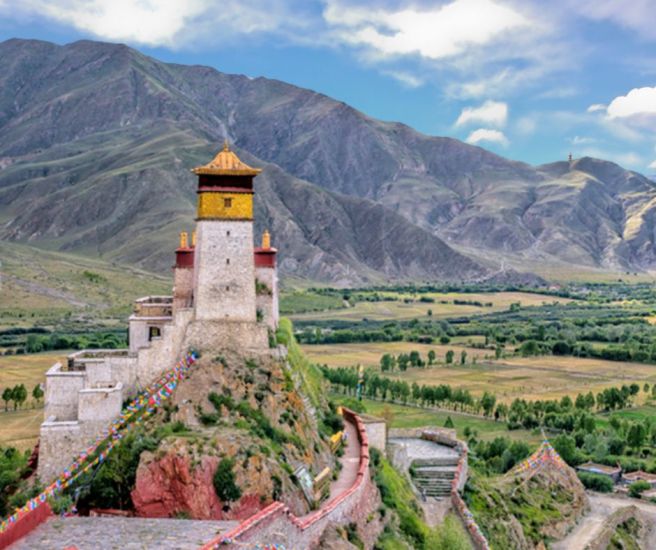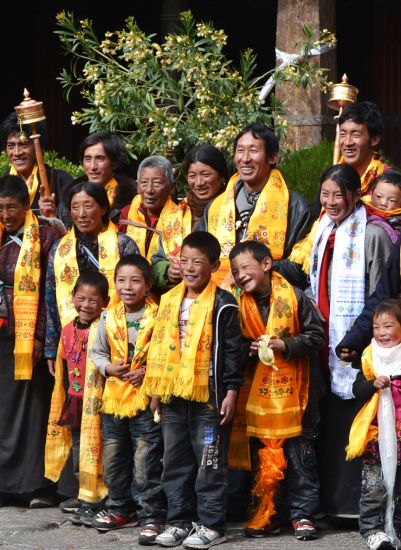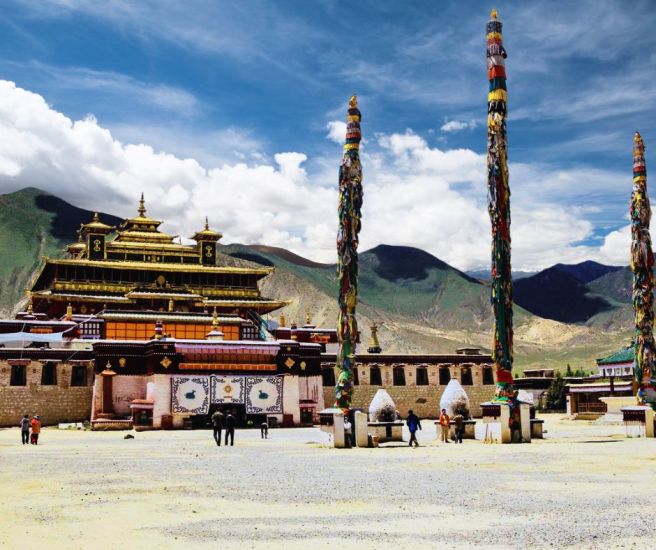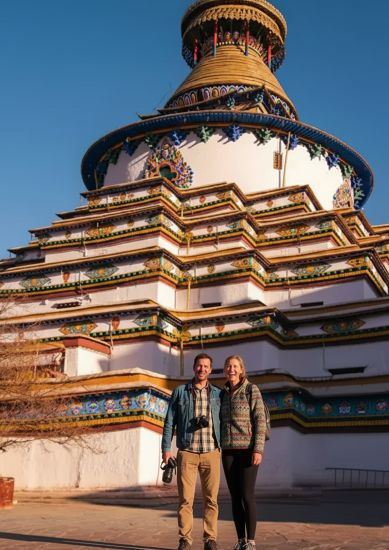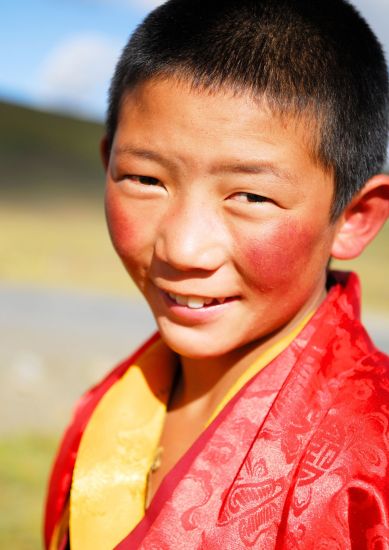Tibet Cultural Tour
9 Days / Tibet
Activity
Difficulty Level
Destinations
Trip Start / End
Max Altitude
Accommodation
Travel Style
Best time to travel
Personalized Travel Advice

Dev Raj Nepal
+977 9851096523
Detailed Itinerary
01
DAY
01
Your Tibet Cultural Tour begins with a scenic flight to Lhasa’s Gonggar Airport. Upon arrival, you will be warmly welcomed by your expert Tibetan guide, who will assist you with the transfer to Tsedang. The drive takes around 2 hours and offers your first glimpse of Tibet’s stunning landscapes: rolling hills in the distance, clear rivers, and traditional Tibetan villages along the way.
Once you arrive, check in to your hotel and take time to rest, allowing your body to acclimate to the higher altitude. Use this time to enjoy the serene surroundings and prepare for the cultural exploration that awaits, including visits to ancient monasteries, historic palaces, and sacred sites that make Tsedang a key highlight of your Tibet Cultural Tour. In the evening, you will be welcomed formally with a traditional Tibetan dinner.
Lhasa Arrival – Drive to Tsedang
Your Tibet Cultural Tour begins with a scenic flight to Lhasa’s Gonggar Airport. Upon arrival, you will be warmly welcomed by your expert Tibetan guide, who will assist you with the transfer to Tsedang. The drive takes around 2 hours and offers your first glimpse of Tibet’s stunning landscapes: rolling hills in the distance, clear rivers, and traditional Tibetan villages along the way.
Once you arrive, check in to your hotel and take time to rest, allowing your body to acclimate to the higher altitude. Use this time to enjoy the serene surroundings and prepare for the cultural exploration that awaits, including visits to ancient monasteries, historic palaces, and sacred sites that make Tsedang a key highlight of your Tibet Cultural Tour. In the evening, you will be welcomed formally with a traditional Tibetan dinner.
02
DAY
02
Today, you will step into the very heart of Tibet’s earliest civilization, where culture and history converge in a landscape both grand and intimate. Begin with Yambulakhang Palace, reputedly Tibet’s oldest structure. Perched atop a hill, it offers sweeping views of the fertile Yarlung Valley, the surrounding mountains standing as silent witnesses to centuries of human endeavor and the enduring values of this ancient land.
Next, visit Tradruk Temple, one of Tibet’s earliest Buddhist sanctuaries. Within its serene courtyards and among its sacred statues, one can sense the living traditions of Tibetan spiritual life, a delicate weave of devotion, ritual, and cosmology that continues to shape local customs. The temple embodies a culture that reveres both the seen and the unseen, a culture that has persisted through the ages.
Later, journey to the Chongye Valley, home to the ancient tombs of Tibetan kings. This sacred site, steeped in legend, offers insight into the customs and ceremonies that honored the rulers of early Tibet, reflecting a civilization deeply attuned to both earthly governance and cosmic order.
Return to your hotel in Tsedang to rest, allowing the quiet dignity of the valley and its storied past to settle in your mind. Here, in this timeless place, one encounters the enduring values, traditions, and culture that form the foundation of Tibet, preparing you for the next stage of your Tibet Cultural Tour.
Tsedang Exploration
Today, you will step into the very heart of Tibet’s earliest civilization, where culture and history converge in a landscape both grand and intimate. Begin with Yambulakhang Palace, reputedly Tibet’s oldest structure. Perched atop a hill, it offers sweeping views of the fertile Yarlung Valley, the surrounding mountains standing as silent witnesses to centuries of human endeavor and the enduring values of this ancient land.
Next, visit Tradruk Temple, one of Tibet’s earliest Buddhist sanctuaries. Within its serene courtyards and among its sacred statues, one can sense the living traditions of Tibetan spiritual life, a delicate weave of devotion, ritual, and cosmology that continues to shape local customs. The temple embodies a culture that reveres both the seen and the unseen, a culture that has persisted through the ages.
Later, journey to the Chongye Valley, home to the ancient tombs of Tibetan kings. This sacred site, steeped in legend, offers insight into the customs and ceremonies that honored the rulers of early Tibet, reflecting a civilization deeply attuned to both earthly governance and cosmic order.
Return to your hotel in Tsedang to rest, allowing the quiet dignity of the valley and its storied past to settle in your mind. Here, in this timeless place, one encounters the enduring values, traditions, and culture that form the foundation of Tibet, preparing you for the next stage of your Tibet Cultural Tour.
03
DAY
03
After breakfast, embark on a scenic drive to Lhasa, a journey of approximately that passes through valleys and hills filled with natural beauty as well as history. En route, you will pause at Samye Monastery, Tibet’s first monastery, founded in the 8th century. This sacred site, a UNESCO World Heritage treasure, embodies the cosmology and spiritual vision of early Tibetan Buddhism. Its unique mandala layout harmoniously blends Indian, Tibetan, and Chinese architectural traditions, reflecting the cross-cultural currents that shaped Tibet’s early spiritual life.
Walk through the monastery’s courtyards and temples, allowing the serene atmosphere, intricate murals, and sacred statues to convey the values and traditions that have guided Tibetan culture for over a millennium. Here, in the stillness of Samye, one can sense the continuity of ritual, devotion, and cultural memory that forms the foundation of Tibetan identity.
Continue your journey to Lhasa, arriving in the afternoon to check in at your hotel. Take the evening to rest, reflect, and absorb the cultural resonance of the day, preparing for the next chapters of your Tibet Cultural Tour.
Drive to Lhasa via Samye Monastery
After breakfast, embark on a scenic drive to Lhasa, a journey of approximately that passes through valleys and hills filled with natural beauty as well as history. En route, you will pause at Samye Monastery, Tibet’s first monastery, founded in the 8th century. This sacred site, a UNESCO World Heritage treasure, embodies the cosmology and spiritual vision of early Tibetan Buddhism. Its unique mandala layout harmoniously blends Indian, Tibetan, and Chinese architectural traditions, reflecting the cross-cultural currents that shaped Tibet’s early spiritual life.
Walk through the monastery’s courtyards and temples, allowing the serene atmosphere, intricate murals, and sacred statues to convey the values and traditions that have guided Tibetan culture for over a millennium. Here, in the stillness of Samye, one can sense the continuity of ritual, devotion, and cultural memory that forms the foundation of Tibetan identity.
Continue your journey to Lhasa, arriving in the afternoon to check in at your hotel. Take the evening to rest, reflect, and absorb the cultural resonance of the day, preparing for the next chapters of your Tibet Cultural Tour.
04
DAY
04
The ancient pulse of Lhasa guides you first to Drepung Monastery, a sprawling monastic citadel that once nurtured the spiritual lives of over ten thousand monks. Within its sacred halls, the Coqen Hall demonstrates the fascinating, philosophical depth of Tibetan Buddhism. Here, stories of renowned teachers and historical luminaries unravel, revealing a culture deeply attuned to contemplation, devotion, and religious values.
Venturing further into Loseling College (or a similar section of Drepung), you encounter the disciplined routines of monastic life. Dormitories and classrooms speak silently of ancient heritage, illustrating how knowledge, spiritual practice, and rituals intertwine to sustain the continuity of Tibetan monastic culture.
The path leads onward to Sera Monastery, established in 1419, a hub of rigorous study and intellectual vitality. Amid its courtyards, witness the renowned monk debates, where logic, philosophy, and insight converge in spirited dialogue. These debates are exercises in argumentation, and manifest a living culture of inquiry, teaching students to harmonize reason with devotion and to advance through both spiritual and academic ranks.
Evening settles over Lhasa as you return to your hotel, carrying with you the quiet resonance of traditional worldview, the enduring values of monastic life, and a deeper understanding of the spiritual and cultural foundations that continue to define Tibet.
Lhasa Exploration
The ancient pulse of Lhasa guides you first to Drepung Monastery, a sprawling monastic citadel that once nurtured the spiritual lives of over ten thousand monks. Within its sacred halls, the Coqen Hall demonstrates the fascinating, philosophical depth of Tibetan Buddhism. Here, stories of renowned teachers and historical luminaries unravel, revealing a culture deeply attuned to contemplation, devotion, and religious values.
Venturing further into Loseling College (or a similar section of Drepung), you encounter the disciplined routines of monastic life. Dormitories and classrooms speak silently of ancient heritage, illustrating how knowledge, spiritual practice, and rituals intertwine to sustain the continuity of Tibetan monastic culture.
The path leads onward to Sera Monastery, established in 1419, a hub of rigorous study and intellectual vitality. Amid its courtyards, witness the renowned monk debates, where logic, philosophy, and insight converge in spirited dialogue. These debates are exercises in argumentation, and manifest a living culture of inquiry, teaching students to harmonize reason with devotion and to advance through both spiritual and academic ranks.
Evening settles over Lhasa as you return to your hotel, carrying with you the quiet resonance of traditional worldview, the enduring values of monastic life, and a deeper understanding of the spiritual and cultural foundations that continue to define Tibet.
05
DAY
05
The city of Lhasa stretches below as you ascend to Potala Palace, an architectural marvel towering over the valley. From its heights, the sweeping panorama reveals the intricate fabric of Lhasa’s streets, temples, and hills. Within the palace, your guide recounts the lives of the successive Dalai Lamas, narrating the legacy and philosophies that have shaped Tibet’s historical and spiritual trajectory. Each hall and sacred relic reflects centuries of artistic mastery and spiritual insight.
At Longwangtan Park, nestled at the palace’s base, pause to admire the majestic structure from a tranquil perspective. Here, one can appreciate not only its architectural brilliance but also the enduring practices and worldview that continue to resonate within the city.
Next, visit Jokhang Temple, the spiritual heart of Lhasa. At its center stands the twelve-year-old statue of Shakyamuni Buddha, astonishingly lifelike, offering a rare encounter with an image of profound significance. Surrounding the temple, Barkhor Street invites a slow circuit, where the devout express their beliefs and engage in daily practices, illuminating the living ethos of the city.
Conclude the day in a lively indoor Tibetan tea house, sharing the warmth of sweet tea with locals. As you sip, your guide sheds light on the social customs, philosophies, and everyday interactions that define life in Lhasa, revealing a city where heritage and modernity exist in harmonious balance.
Lhasa Exploration
The city of Lhasa stretches below as you ascend to Potala Palace, an architectural marvel towering over the valley. From its heights, the sweeping panorama reveals the intricate fabric of Lhasa’s streets, temples, and hills. Within the palace, your guide recounts the lives of the successive Dalai Lamas, narrating the legacy and philosophies that have shaped Tibet’s historical and spiritual trajectory. Each hall and sacred relic reflects centuries of artistic mastery and spiritual insight.
At Longwangtan Park, nestled at the palace’s base, pause to admire the majestic structure from a tranquil perspective. Here, one can appreciate not only its architectural brilliance but also the enduring practices and worldview that continue to resonate within the city.
Next, visit Jokhang Temple, the spiritual heart of Lhasa. At its center stands the twelve-year-old statue of Shakyamuni Buddha, astonishingly lifelike, offering a rare encounter with an image of profound significance. Surrounding the temple, Barkhor Street invites a slow circuit, where the devout express their beliefs and engage in daily practices, illuminating the living ethos of the city.
Conclude the day in a lively indoor Tibetan tea house, sharing the warmth of sweet tea with locals. As you sip, your guide sheds light on the social customs, philosophies, and everyday interactions that define life in Lhasa, revealing a city where heritage and modernity exist in harmonious balance.
06
DAY
06
The journey to Gyantse uncovers itself along a route of extraordinary vistas and historical resonance. Your path traces the shores of Yamdrok Tso, a striking turquoise lake long revered for its sacred significance, reflecting the sky and mountains in dazzling clarity. As you ascend the high passes of Kamba La (15,700 ft) and Karo La (16,500 ft), the surrounding peaks rise like ancient sentinels, offering panoramic views that speak to the majesty and enduring spirit of the Tibetan landscape.
Along the way, stop at Drolma Lakhang Monastery and Samding Monastery, perched gracefully along the lake’s edge. These monasteries exemplify the fusion of spiritual devotion, architectural artistry, and the philosophical ethos of Tibetan Buddhism, offering glimpses into the contemplative practices and intellectual heritage of the region.
Upon reaching Gyantse, a town steeped in historical significance, check into your hotel and unwind, allowing the serene mountains and storied surroundings to settle into memory, preparing for the explorations ahead.
Lhasa – Gyantse via Yamdrok Tsho
The journey to Gyantse uncovers itself along a route of extraordinary vistas and historical resonance. Your path traces the shores of Yamdrok Tso, a striking turquoise lake long revered for its sacred significance, reflecting the sky and mountains in dazzling clarity. As you ascend the high passes of Kamba La (15,700 ft) and Karo La (16,500 ft), the surrounding peaks rise like ancient sentinels, offering panoramic views that speak to the majesty and enduring spirit of the Tibetan landscape.
Along the way, stop at Drolma Lakhang Monastery and Samding Monastery, perched gracefully along the lake’s edge. These monasteries exemplify the fusion of spiritual devotion, architectural artistry, and the philosophical ethos of Tibetan Buddhism, offering glimpses into the contemplative practices and intellectual heritage of the region.
Upon reaching Gyantse, a town steeped in historical significance, check into your hotel and unwind, allowing the serene mountains and storied surroundings to settle into memory, preparing for the explorations ahead.
07
DAY
07
The day opens with an exploration of Gyantse’s historic treasures. Begin at Pelkor Chode Monastery, a rare sanctuary where multiple schools of Tibetan Buddhism converge, offering a vivid glimpse into the region’s philosophical diversity and spiritual legacy. Just a short walk away, the Kumbum Stupa rises as a masterpiece of sacred architecture: its tiered chapels form a three-dimensional mandala, each adorned with intricate murals and statues that speak to centuries of devotional artistry and contemplative practice. Along the monastery grounds, local devotees move quietly through their daily rituals, providing a living connection to the beliefs and customs that continue to shape the community.
After a morning steeped in reflection and discovery, continue the journey to Shigatse, Tibet’s second-largest city and a center of historical and spiritual significance. Upon arrival, pause to refresh before visiting Tashilunpo Monastery, the principal seat of the Panchen Lama. The monumental Buddha statue within its halls, together with the elaborate artistry throughout the complex, offers insight into the region’s spiritual philosophy, aesthetic mastery, and enduring worldview. Walking through the monastery courtyards and nearby streets, observe monks in discussion and locals engaged in devotion, an intimate portrait of Shigatse’s living heritage.
As evening falls, check into your hotel in Shigatse, allowing the impressions of sacred architecture, historical richness, and the quiet wisdom of local life to resonate, preparing you for the next stage of your cultural tour in Tibet.
Gyantse – Shigatse
The day opens with an exploration of Gyantse’s historic treasures. Begin at Pelkor Chode Monastery, a rare sanctuary where multiple schools of Tibetan Buddhism converge, offering a vivid glimpse into the region’s philosophical diversity and spiritual legacy. Just a short walk away, the Kumbum Stupa rises as a masterpiece of sacred architecture: its tiered chapels form a three-dimensional mandala, each adorned with intricate murals and statues that speak to centuries of devotional artistry and contemplative practice. Along the monastery grounds, local devotees move quietly through their daily rituals, providing a living connection to the beliefs and customs that continue to shape the community.
After a morning steeped in reflection and discovery, continue the journey to Shigatse, Tibet’s second-largest city and a center of historical and spiritual significance. Upon arrival, pause to refresh before visiting Tashilunpo Monastery, the principal seat of the Panchen Lama. The monumental Buddha statue within its halls, together with the elaborate artistry throughout the complex, offers insight into the region’s spiritual philosophy, aesthetic mastery, and enduring worldview. Walking through the monastery courtyards and nearby streets, observe monks in discussion and locals engaged in devotion, an intimate portrait of Shigatse’s living heritage.
As evening falls, check into your hotel in Shigatse, allowing the impressions of sacred architecture, historical richness, and the quiet wisdom of local life to resonate, preparing you for the next stage of your cultural tour in Tibet.
08
DAY
08
The journey back to Lhasa traces the serene course of the Yarlung Tsangpo River, offering a moving panorama of valleys, rivers, and distant mountains that have shaped Tibet’s landscapes and way of life for centuries. Along the route, pause at Yundrungling Monastery in Tradruk, a remarkable seat of the Bon religion, one of Tibet’s most ancient and lesser-known spiritual traditions. The monastery’s unique architecture, sacred symbols, and serene courtyards provide a rare window into a worldview that predates the arrival of Buddhism in the region, offering insight into Tibet’s rich spiritual diversity.
Continue along the New Road, absorbing the highland vistas and the quiet rhythms of riverside villages. Upon arrival in Lhasa, check into your hotel and unwind, reflecting on the spiritual heritage, landscapes, and philosophies encountered along the way. The evening offers a chance to rest or walk around the streets of Lhasa and observe or even interact with the locals to have an immersive cultural experience.
Return to Lhasa via the New Road
The journey back to Lhasa traces the serene course of the Yarlung Tsangpo River, offering a moving panorama of valleys, rivers, and distant mountains that have shaped Tibet’s landscapes and way of life for centuries. Along the route, pause at Yundrungling Monastery in Tradruk, a remarkable seat of the Bon religion, one of Tibet’s most ancient and lesser-known spiritual traditions. The monastery’s unique architecture, sacred symbols, and serene courtyards provide a rare window into a worldview that predates the arrival of Buddhism in the region, offering insight into Tibet’s rich spiritual diversity.
Continue along the New Road, absorbing the highland vistas and the quiet rhythms of riverside villages. Upon arrival in Lhasa, check into your hotel and unwind, reflecting on the spiritual heritage, landscapes, and philosophies encountered along the way. The evening offers a chance to rest or walk around the streets of Lhasa and observe or even interact with the locals to have an immersive cultural experience.
09
DAY
09
The cultural tour of Tibet draws to a close as you prepare for your departure from Lhasa. Depending on your schedule, there may be a final opportunity to stroll through the city streets, observe the rhythms of daily life, or take in a last view of the Potala Palace and surrounding hills.
Transfer to Lhasa Gonggar Airport for your onward flight, carrying with you the impressions of sacred monasteries, majestic landscapes, and the enduring philosophies and artistry that define this extraordinary land. As you leave, the vistas, the heritage, and the living traditions of Tibet remain with you, offering a lasting memory long after the journey ends.
Lhasa – Departure
The cultural tour of Tibet draws to a close as you prepare for your departure from Lhasa. Depending on your schedule, there may be a final opportunity to stroll through the city streets, observe the rhythms of daily life, or take in a last view of the Potala Palace and surrounding hills.
Transfer to Lhasa Gonggar Airport for your onward flight, carrying with you the impressions of sacred monasteries, majestic landscapes, and the enduring philosophies and artistry that define this extraordinary land. As you leave, the vistas, the heritage, and the living traditions of Tibet remain with you, offering a lasting memory long after the journey ends.
Includes / Excludes
Inclusions
-
Accommodation on twin sharing.
-
Daily Breakfast.
-
All transfers and sightseeing by a private air conditioned car or coach.
-
Sightseeing admission fees.
-
English speaking Tour Guide.
-
Tibet Travel Permit.
Exclusions
-
International and internal air fare.
-
Airport Taxes.
-
Chinese visa fee.
-
Lunch and dinner except as indicated.
-
Travel & Health Insurance.
-
All extra expenses caused due to nature or unforeseen events.
-
Excess baggage charges.
-
Optional tipping to local staffs, hotels etc.
-
Items of a personal nature (sodas, alcoholic beverages, laundry, telephone etc).
Trip Info
The daily life of the Tibetan people is closely intertwined with the unique ecological environment of the Qinghai-Tibet Plateau. Living three to four kilometers above sea level in harsh, cold conditions, Tibetans have developed practical and resourceful ways to thrive. Clothing made from animal fur protects against freezing temperatures, while dietary and agricultural practices, rooted in a philosophy of relying on mountains and water, demonstrate careful use of natural resources. Even cow dung serves dual purposes, as both fuel and fertilizer, reflecting a lifestyle that balances survival with respect for the land. Experiences like these come alive on a Tibet Cultural Tour, offering travelers a direct encounter with the simplicity and wisdom of Tibetan daily life.
Religion forms the backbone of Tibetan society, shaping spiritual perspectives and guiding behavior. The Bon religion, Tibet’s indigenous faith, emphasizes animism and the sanctity of mountains and lakes, instilling deep reverence for nature. Tibetan Buddhism later blended with Bon teachings, fostering a philosophy of interconnectedness, karmic cause and effect, and compassion for all living beings. Through these spiritual frameworks, Tibetans are guided toward a harmonious relationship with their environment, where protecting life and respecting nature are inseparable from daily practice.
Nature worship reinforces this connection with the environment. Tibetans honor rivers, lakes, mountains, and yaks as sacred intermediaries between heaven and earth. Such reverence is not merely symbolic; it shapes actions, from avoiding pollution to conserving water and treating animals with care. These practices reflect a profound understanding of the plateau’s fragile ecosystem, demonstrating how spiritual belief and practical living combine to sustain the natural world.
Mythology and epic narratives complete the cultural tapestry, preserving ecological awareness and human-nature relationships through vivid storytelling. Tales of Tibetan kings, the heroic Gesar epic, and other myths encode lessons about the origins of natural features, the consequences of human actions, and the sacredness of life. Together with religion and nature worship, these stories create a holistic worldview in which spirituality, reverence for the environment, and cultural memory interweave, offering a timeless reflection of Tibetan values and identity.
Travelers to Tibet will quickly sense that its culture is deeply interwoven with spirituality. Daily life carries a sacred dimension, visible in the flutter of prayer flags across mountain passes, the prostrations of pilgrims at Jokhang Temple, and the glow of butter lamps in monastery halls. These practices are not isolated rituals but part of a living tradition that shapes the rhythm of Tibetan communities, offering visitors a chance to witness how devotion infuses everyday life.
One of the most distinctive features of Tibetan culture is its holistic outlook. Medicine, for example, blends natural herbal and mineral remedies with spiritual elements, where prayers may accompany treatments and special medicines are taken on auspicious days. Monks and lamas often play many roles—as teachers, counselors, and healers—reflecting a culture that values the well-being of both body and spirit. For travelers, encountering this worldview provides an insight into how Tibetans balance the practical with the sacred.
Art and craftsmanship are also powerful expressions of Tibetan heritage. Intricate thangka paintings, sand mandalas, and the resonant sound of long horns during monastic ceremonies are as much cultural as they are spiritual. Traditional dress, such as the chuba, and customs surrounding journeys or festivals remain visible, often accompanied by music, dance, and storytelling. These experiences invite travelers to step into a culture where creativity is inseparable from meaning and symbolism.
For visitors, Tibetan culture offers not only visual beauty but also a way of understanding life through a broader lens. Its emphasis on harmony, respect for natural cycles, and devotion to spiritual practice create a unique atmosphere across the land of snows. Exploring monasteries, walking alongside pilgrims, or simply sharing tea with locals allows travelers to experience a culture that continues to thrive in its mountain homeland while offering timeless lessons in balance and reverence.
Tibet Cultural Tour
Tibet Cultural Tour offers travelers an extraordinary journey into the heart of one of the world’s most mystical regions. From the moment you arrive in Lhasa, the spiritual and historical capital of Tibet, you are immersed in a world where ancient traditions, sacred architecture, and breathtaking landscapes converge. The tour provides a profound understanding of Tibetan culture, revealing a living heritage that has flourished for centuries despite the harsh high-altitude environment of the Qinghai-Tibet Plateau.
The journey begins with exploration of Tsedang, often called the birthplace of Tibetan civilization. Here, you will visit the Yambulakhang Palace, Tibet’s oldest structure, perched atop a hill offering panoramic views of the fertile Yarlung Valley. You will also discover Tradruk Temple, one of Tibet’s earliest Buddhist temples, and the ancient tombs of Tibetan kings in Chongye Valley, where legend and history intertwine to reflect Tibet’s early spiritual and political foundations. Every site in Tsedang is a window into the region’s long-standing traditions, philosophical thought, and artistic achievements.
Traveling further along the plateau, the tour takes you to Samye Monastery, the first monastery of Tibet, where Indian, Tibetan, and Chinese architectural styles converge into a unique mandala layout. In Lhasa, the monumental Potala Palace and the sacred Jokhang Temple allow travelers to witness the intersection of spiritual devotion, royal history, and daily life in Tibetan society. Drepung and Sera Monasteries offer insight into monastic life, scholarly debates, and centuries-old rituals, providing an intimate look at the intellectual and spiritual traditions that continue to shape Tibet.
The tour also spans the rich cultural and natural tapestry beyond Lhasa. Driving along Yamdrok Tso, visiting Gyantse with its striking Pelkor Chode Monastery and the iconic Kumbum Stupa, and exploring Shigatse with Tashilunpo Monastery, travelers experience breathtaking landscapes, high passes, and vibrant local communities. Each stop highlights Tibet’s unique customs, artistry, and spiritual life, offering encounters with monks, artisans, and locals who maintain their ancestral traditions. From sacred lakes and monasteries to festivals, prayer rituals, and the daily rhythms of Tibetan life, this tour provides a profoundly enriching cultural experience, making it one of the most immersive journeys into heritage, faith, and highland civilization.
The best time to visit Tibet is from April to October, when the weather is milder, and the conditions are ideal for sightseeing and high-altitude travel. Here’s a seasonal breakdown:
Spring (April – May)
Weather: Mild temperatures with clear skies, making it excellent for sightseeing and photography. This is a perfect time for trekking and exploring monasteries, with blooming landscapes and fewer crowds.
Summer (June – August)
Weather: Warmer temperatures, though occasional rain showers may occur. Summer is the peak season, ideal for visiting sacred lakes and high passes. Additionally, many Tibetan festivals, such as the Shoton Festival, occur during these months.
Autumn (September – October)
Weather: Cool, stable, and clear skies, offering spectacular mountain views. This is considered the best season for trekking and photography, as landscapes are vivid and crowds have lessened slightly.
Winter (November – March)
Weather: Cold, especially at higher altitudes, with some areas becoming inaccessible due to snow. While challenging, winter provides unique cultural experiences with fewer tourists, and cities like Lhasa remain accessible, offering a quieter visit.
For ideal weather, clear views, and vibrant festivals, April-May and September-October are especially recommended.
Clothing
- Fleece jackets, thermal tops, and warm sweaters for cold mornings and evenings.
- Insulated, windproof, and waterproof jacket for high altitudes and unpredictable weather.
- Trekking Pants which are comfortable, durable pants for daily excursions.
- Long-sleeved and short-sleeved thermal tops and leggings for layering.
- Comfortable clothing for evenings in hotels.
- Warm Hat and Gloves which are essential for cold temperatures at high passes and early mornings.
- Scarf which is useful for dust protection on windy days.
- UV-protected sunglasses to shield your eyes from the intense high-altitude sun.
- Comfortable hiking or walking boots with good grip for exploring monasteries and uneven paths.
- Lightweight and comfortable footwear for evenings.
Accessories
- Small daypack for daily essentials, such as water, snacks, and camera.
- For hydration throughout the trip; consider a reusable filter bottle for added safety.
Travel Essentials
- Passport and Visa and Tibet Travel Permit and necessary entry visas for China or Nepal, depending on your route.
- Photocopies of Important Documents Passport, permits, and travel insurance for safekeeping.
- Travel Insurance to ensure coverage includes high-altitude trekking and emergency evacuation.
Toiletries and Personal Items
- Moisturizer and Lip Balm as the high-altitude air is dry, so hydrating skin care is essential.
- Sunscreen (SPF 50+) to protect from strong UV rays at high altitudes.
- Band-aids, antiseptic wipes, and pain relievers.
- Speak to your doctor about bringing acetazolamide (Diamox) to ease altitude sickness.
- Personal Hygiene Products
- Power Bank to charge devices on the go, as electricity may be limited in some locations.
- Adapter Plug as Tibet uses type A, C, and I plug types (220V).
Please note that Western food is not available in many local restaurants but at larger hotels, you can find them. Tibetan cuisine is hearty, flavorful, and often influenced by Buddhist traditions. Expect a lot of simple, yet filling dishes that emphasize local ingredients such as barley, potatoes, dairy, and yak meat. Most hotels and local restaurants will also cater to tourists and offer vegetarian options.
Momos: Tibetan-style dumplings, typically filled with yak meat, vegetables, or cheese, and served steamed or fried.
Thukpa: A noodle soup that can be made with vegetables or meat, providing a warm and comforting meal, especially in cooler weather.
Tsampa: A traditional Tibetan dish made from roasted barley flour, often mixed with tea or butter for a quick and easy meal.
Yak Butter Tea: A unique and traditional drink made with yak butter, tea, and salt, providing energy and warmth, particularly in the high altitudes.
Sichuan and Chinese Influence: While Tibetan cuisine dominates, you’ll also find Sichuan and Chinese influences, especially in larger cities like Lhasa.
During your stay in Lhasa, you’ll be hosted at _____________ or a similar property. This hotel offers a welcoming environment with a blend of local Tibetan design and modern amenities, providing a comfortable base for your adventures. These accommodations ensure a pleasant and immersive experience, allowing you to relax in style while staying connected to the unique culture of each destination.
In Remote Areas: In places like Tsedang, Gyantse, and Shigatse, accommodations tend to be more basic, often guesthouses or small hotels that provide cozy rooms with heating and local-style meals. While they may not have all the luxuries of larger cities, they offer an authentic Tibetan experience.
Private Vehicles
Throughout the trip, private vehicles will be used for transfers and sightseeing. These include comfortable cars or SUVs, which are good for navigating both urban and rural areas. These vehicles are chosen for their comfort and reliability, ensuring a smooth and enjoyable journey between destinations. They are equipped to handle various road conditions and provide a high level of convenience for travelers.
Minivans or Buses
For group travel of more than 8 people Buses will be used and more a group with more than 3 people, Minivans will be used. These vehicles are suitable for accommodating larger groups and offer ample space for passengers and luggage. Equipped with air conditioning and comfortable seating, these vehicles are designed to enhance travel comfort over longer distances. They also offer better stability and space for scenic drives and excursions.
Special Vehicles
For specific excursions, such as visiting remote areas or high-altitude locations, specialized vehicles may be used to navigate challenging terrains. These vehicles are equipped to handle rugged or uneven roads and provide a safe and comfortable ride in more demanding conditions.
Tibet (China)
All foreign nationals planning to do this Tibet Cultural Tour must first secure a Chinese Tourist Visa (L visa) from a Chinese Embassy or Consulate in their home country. It is recommended to arrange this visa at least one month prior to your trip.
Once your Chinese visa is obtained, we will assist in applying for your Tibet Travel Permit. This permit is mandatory and will be checked when boarding your flight or train to Lhasa and again upon arrival. Issued by the Tibet Tourism Bureau, the permit usually takes 10–15 working days to process after the submission of your Chinese visa copy. Please note that individual applications are not accepted by the Bureau.
For more information, Visit Chinese Visa Application Centre
Breathtaking Landscapes
On a Tibet Cultural Tour, you’ll be mesmerized by the region’s dramatic scenery, from towering snow-capped peaks to the turquoise waters of Yamdrok Tsho. Scenic drives across rugged terrain and high-altitude passes provide sweeping panoramas that are truly unforgettable.
Cultural Immersion
Dive into Tibet’s rich spiritual traditions by visiting sacred landmarks such as Potala Palace and Jokhang Temple. Witness Tibetan Buddhism in action through monks’ rituals, pilgrim practices, and vibrant cultural ceremonies.
Historical Sites
Explore ancient treasures like Yambulakhang Palace and Samye Monastery, where centuries of royal and religious history come alive, offering insight into Tibet’s enduring cultural legacy.
High-Altitude Travel
Traveling above 12,000 feet, Tibet’s altitude may require gentle acclimatization. Mild effects like fatigue or shortness of breath are common, but your guide ensures a safe and comfortable journey throughout your Tibet Cultural Tour.
Serene Yet Vibrant Atmosphere
Experience the balance of tranquility and energy in Tibet, from quiet temple courtyards to lively monk debates and bustling local markets, reflecting the region’s unique cultural rhythm.
Remote Solitude
Tibet’s secluded locations, particularly around sacred lakes and monasteries, provide peaceful moments to connect with nature and the spiritual essence of the land.
Spiritual Journey
This Tibet Cultural Tour offers an immersive spiritual experience, where the devotion of local communities and the sanctity of monastic life leave a lasting impression.
Risks
Altitude Sickness
Tibet’s high altitude (over 12,000 feet) can lead to altitude sickness. Symptoms like headaches, dizziness, and fatigue are common. Acclimatization is key, but it’s important to listen to your body and rest as needed.
Remote Locations
Many of Tibet’s attractions are in remote areas, which can make access challenging. Roads can be rough, and facilities may be basic in some regions, requiring flexibility and patience.
Weather Conditions
The weather in Tibet can be unpredictable, especially in the mountains. Sudden storms, snow, or temperature shifts are common, so being prepared with the right clothing and gear is essential.
Limited Medical Access
Medical facilities can be limited, especially outside major cities like Lhasa. It’s advisable to carry basic medical supplies and have travel insurance that covers health emergencies.
Rewards
Unmatched Natural Beauty
Tibet offers some of the most awe-inspiring landscapes on Earth. From the towering Himalayas to tranquil lakes, the natural beauty is breathtaking and unlike anywhere else.
Rich Spiritual Experience
Visiting sacred sites like Potala Palace, Jokhang Temple, and remote monasteries provides a deep connection to Tibetan Buddhism. The spiritual atmosphere and devotion of local people create a transformative experience.
Culture & Traditions
Tibet’s rich cultural heritage is visible in every corner, from traditional Tibetan customs to vibrant markets. You’ll gain insight into one of the world’s most unique and ancient cultures.
Adventure and Solitude
The rugged terrain offers incredible adventure for trekkers and explorers, while the remote locations allow for peaceful solitude. It’s a chance to disconnect and experience something truly off-the-beaten-path.
Sense of Accomplishment
Overcoming the challenges of high-altitude travel, rough roads, and limited comforts will give you a deep sense of accomplishment, making the rewards of your journey all the more meaningful.
FAQs
Personalized Travel Advice

Dev Raj Nepal
+977 9851096523
